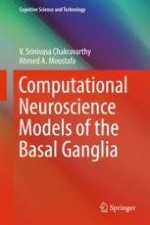2018 | OriginalPaper | Chapter
2. The Molecular, Cellular, and Systems-Level Structure of the Basal Ganglia
Authors : Alekhya Mandali, V. Srinivasa Chakravarthy, Ahmed A. Moustafa
Published in: Computational Neuroscience Models of the Basal Ganglia
Publisher: Springer Singapore
Activate our intelligent search to find suitable subject content or patents.
Select sections of text to find matching patents with Artificial Intelligence. powered by
Select sections of text to find additional relevant content using AI-assisted search. powered by
